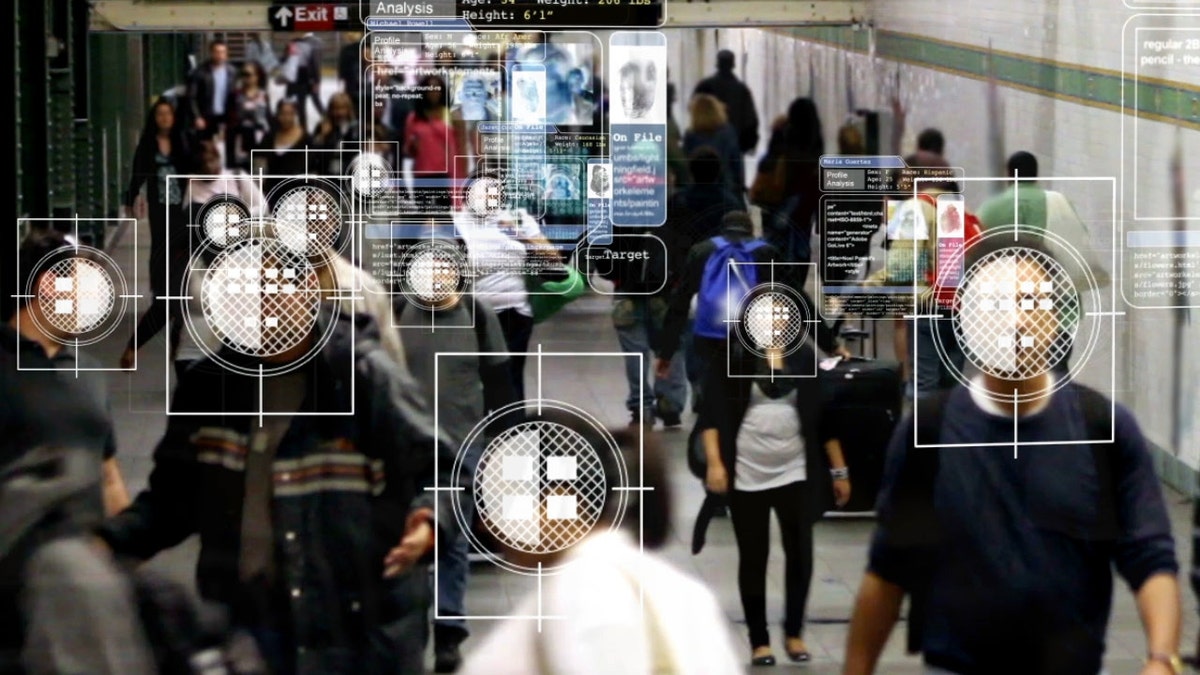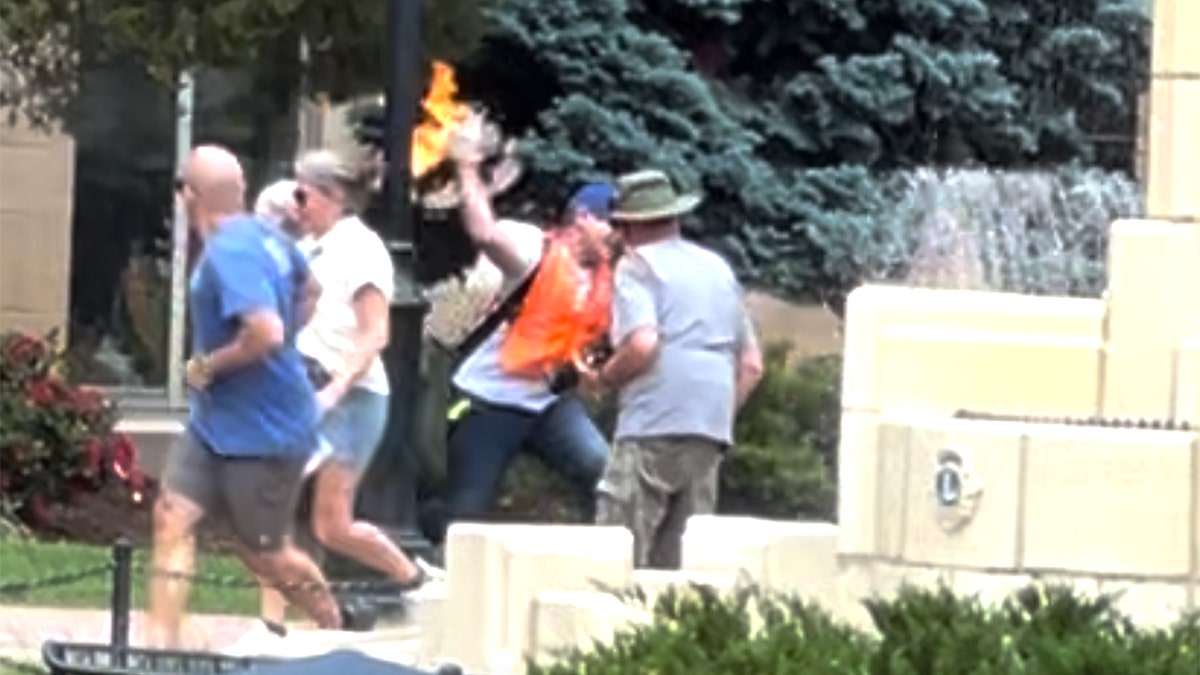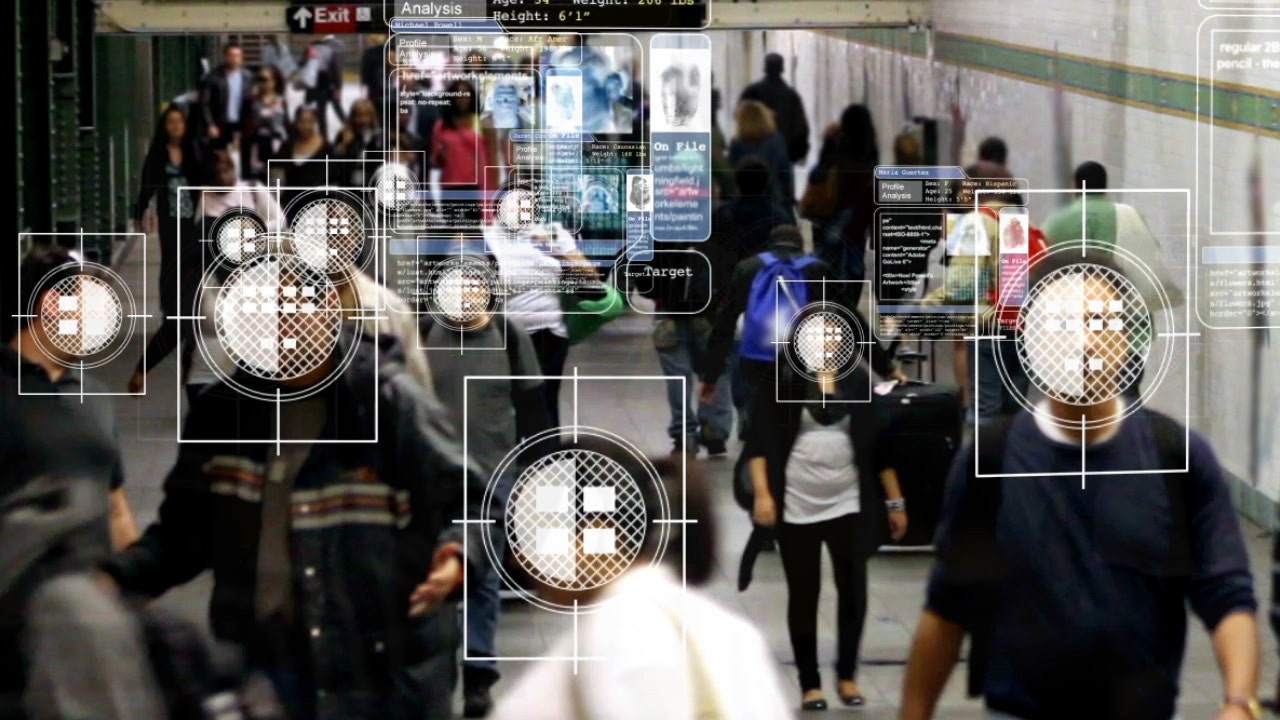NEWYou can now listen to Fox News articles!
In times like this, you hear the concern from your neighbors. You talk about it with people at the gym. It’s the topic of conversation over morning coffee — from small towns to big cities — “Are we going to see an increase in terror attacks here at home?”
Now, there are news that Iranian “sleeper cells” pose a dangerous threat. Such cells could carry out attacks on U.S. citizens in retaliation for recent military operations in Iran, it’s understandable that Americans are feeling concerned for their safety here at home.
People are on edge. If they’re not already in a heightened state of awareness, they’re at least tuned in — watching the headlines and scrolling through a stream of opinions on social media.
COLLEGE CAMPUSES COULD BE GROUND ZERO FOR IRANIAN SLEEPER CELLS PLOTTING TO HARM AMERICANS, EXPERTS WARN
This isn’t about fear or paranoia. It’s a moment to pause and remember:

A computer scans a crowded subway tunnel, using facial recognition to show personal data in a floating display that follows the individual. Each display has a photo of the person, a unique fingerprint, and basic information like name, race, age, etc. There are small blocks of text which have scrolling code excerpts. (iStock)
Attacks have happened on U.S. soil before. The truth is there are people who want to harm our country and disrupt our way of life.
We’ve seen these attacks play out — some tied to foreign groups, others carried out by lone attackers inspired by skewed ideologies. Pearl Harbor. 9/11. The Boston Marathon bombing. The Pensacola Naval Air Station shooting. More recently, the Jewish Museum shooting in D.C.
AMERICANS MUST HAVE ‘HIGHER DEGREE OF VIGILANCE’ AMID IRAN TERROR THREAT, HOUSE INTEL CHAIR WARNS
Moments like this — especially after international military operations — ignite fears of retaliation. They spark conversations at home, at work, and everywhere in between.
With Iranian threats and elevated homeland security alerts making headlines, it’s easy to feel uneasy. But fear isn’t a strategy — awareness and preparedness are.
Practice social media smarts
Social media is one of the greatest modern tools — or the worst — depending on who you ask.
It has the power to inform, empower and engage. You can get access to information from some of the world’s most influential people — directly from them.
AMERICAN TRAVELERS SHOULD KNOW ESCAPE ROUTES AT TRANSIT HUBS AFTER IRAN STRIKES, SECURITY EXPERT WARNS
But not everything you read online is true. And with AI now capable of generating fake images and audio, misinformation is even harder to spot.
While we could talk all day about how narratives shape perception, here are steps to help you stay informed:

Medical workers aid injured people following an explosion at the finish line of the 2013 Boston Marathon in Boston on April 15, 2013, after twin pressure-cooker bombs exploded. (AP)
1. Follow reputable sources. Federal, state and local government platforms are often your best source of accurate updates. Your local police, sheriff and state patrol agencies routinely push out alerts. If you’re not already following them, do that now. Also follow the Department of Homeland Security (DHS) for terrorism alerts, travel advisories, cyber warnings and more. The State Department offers “know before you go” tips for international travel.
2. Subscribe to credentialed news organizations. Major outlets with national security and White House teams often have 24/7 coverage and access to decision-makers.
AMERICANS VULNERABLE TO CYBERATTACKS, LONE WOLF THREATS IN WAKE OF IRANIAN AIRSTRIKES: FORMER FBI AGENT
3. Be cautious of influencers with agendas. Everyone has a platform — but not everyone deserves your trust. Some creators spark engagement, not share truth. Be critical. Vet what you consume.
Practice situational awareness and readiness
Being alert doesn’t require a badge or training. It just requires a decision to pay attention.
Many victims of crime or violence are simply too distracted by screens or conversations to notice danger signs.
1. Put the phone down. Your phone is a powerful tool — and your biggest distraction. Whether you’re driving, walking or in a crowd, looking down at your screen can cause you to miss warning signs. Talk to your teens too. We can’t escape a connected world, but we can move through it smarter.
‘OPEN BORDERS’ UNDER BIDEN COULD HELP IRAN RETALIATE WITH US TERROR SLEEPER CELLS: FORMER FBI BOSS
2. “See something, say something.” Trust your gut. If something feels off, speak up. Teach your kids to do the same. A person acting strangely. A vehicle parked out of place. A bag left unattended. Report it. Law enforcement would rather investigate something small than miss something big.
If you live in an urban area, encourage neighbors to do the same. Neighborhood Watch programs have been stopping crimes for decades with basic awareness.

Video stills of a man later identified as Mohamed Soliman allegedly throwing an incendiary device into a group of pro-Israel supporters (off camera) in Boulder, Colorado, Sunday, June 1, 2025. Soliman was subsequently arrested by police. (Alex Osante)
3. Mentally rehearse the unexpected. Your brain performs better in a crisis when it’s already run the scenario. That’s why we practiced fire drills in school. Same principle. Whether you’re at a concert, grocery store or your workplace — know your exits. Think about where you’d go. It’s not paranoia. It’s preparation.
4. Learn “Run, Hide, Fight.” This DHS-endorsed model gives civilians a plan for surviving active threats. The guides are free and simple. Download them. Talk through them with your family. That’s how you reduce panic and improve survival odds.
Know law enforcement is already working
Law enforcement agencies at every level — local, state and federal — are working together like never before. Real-time intelligence-sharing systems, joint task forces and powerful technologies are helping prevent threats before they happen.
FBI PIVOTS RESOURCES TO COUNTERTERROR, CYBERSECURITY EFFORTS AMID IRAN RETALIATION THREAT: SOURCE
Even when we don’t see it, the work is happening.
1. Increased patrols in vulnerable areas. Nationwide, police departments are stepping up patrols near houses of worship, cultural centers and critical infrastructure — not just in response to specific threats, but out of caution and commitment. You may not always see them, but trained professionals are on the job.
US AIRSTRIKE ON NUCLEAR FACILITIES FOLLOWS YEARS OF IRANIAN PLOTS ON AMERICAN SOIL
2. Technology-driven operations. Many cities now operate real-time crime centers, where agencies use facial recognition, license plate readers and integrated systems to track threats and alert officers instantly. This work doesn’t make headlines, but it prevents attacks.
Final word: You have a role to play
Sure, overseas missions are for the military. But here at home, safety is a shared responsibility.
CLICK HERE FOR MORE FOX NEWS OPINION
You don’t need a uniform, a badge or fear to be prepared.
Many victims of crime or violence are simply too distracted by screens or conversations to notice danger signs.
Stay informed. Stay aware. Speak up. Have a plan.
Because the best time to build resilience isn’t during a crisis — it’s before one ever begins. Whether you’re walking Main Street or living in a high-rise downtown, safety isn’t just about what happens to you. It’s about how you respond when it does.
CLICK HERE TO GET THE FOX NEWS APP
If high-profile threats lead to meaningful conversations, let those conversations center around preparedness — not panic.
Because when enough of us prepare, the ripple effect can be powerful.








